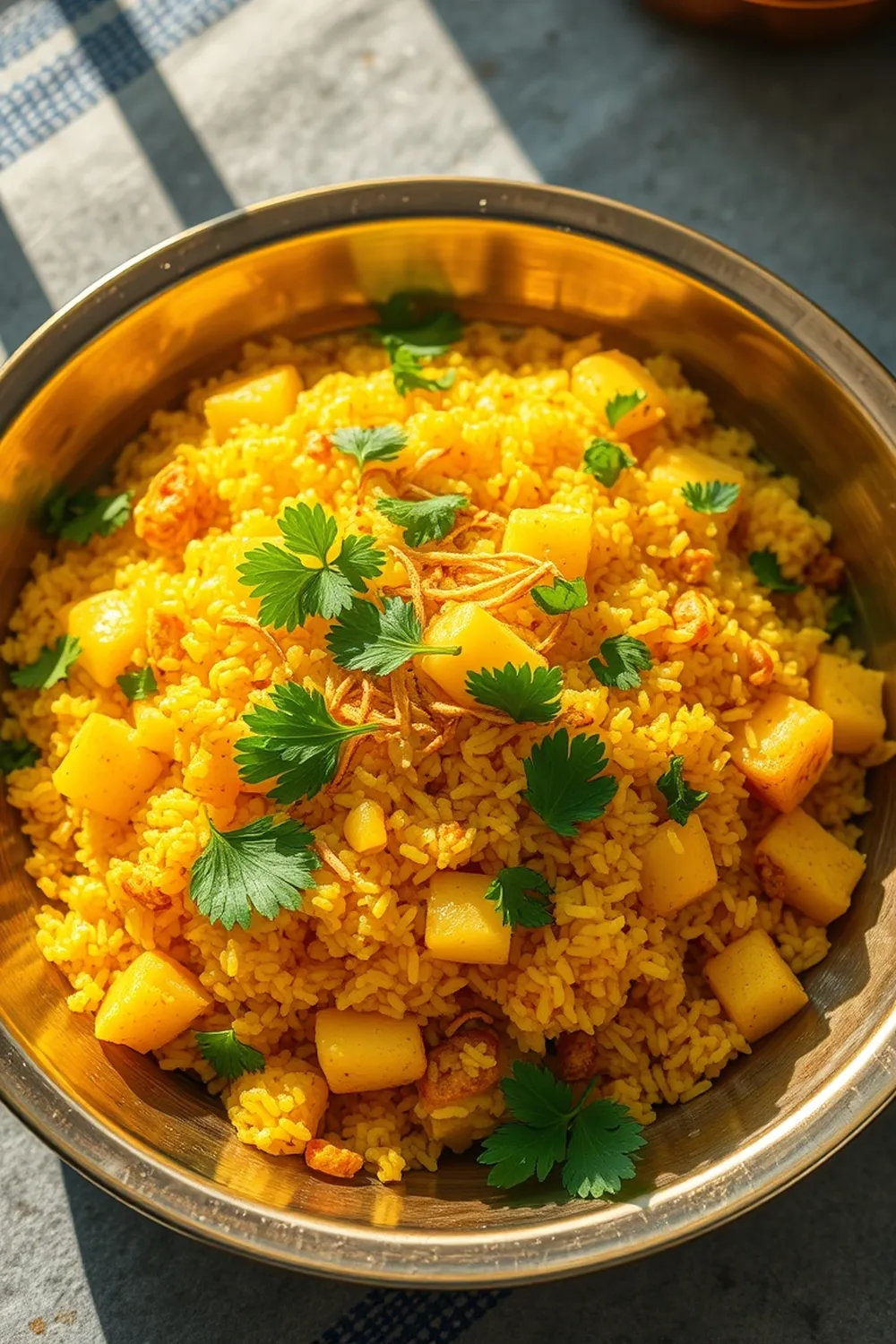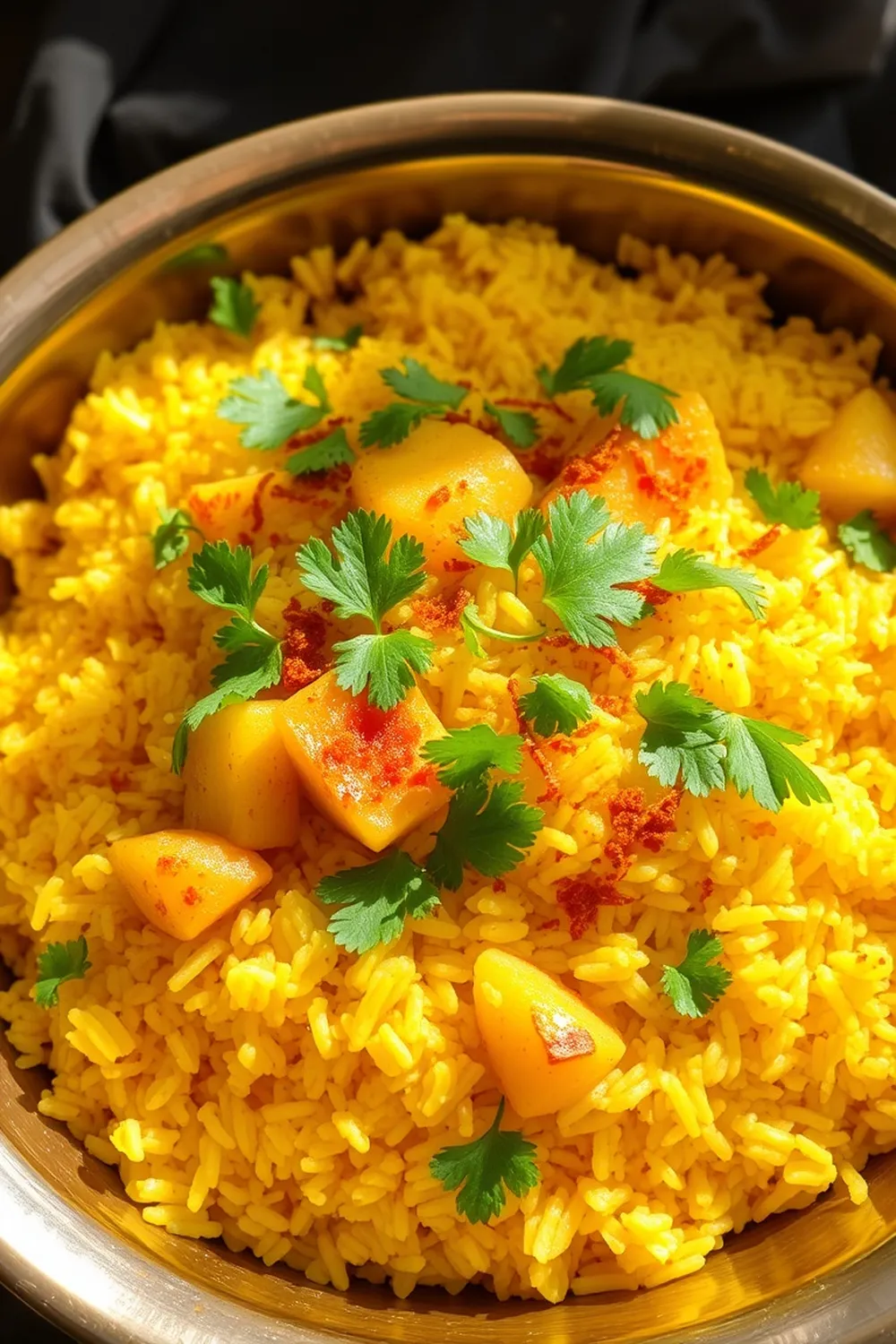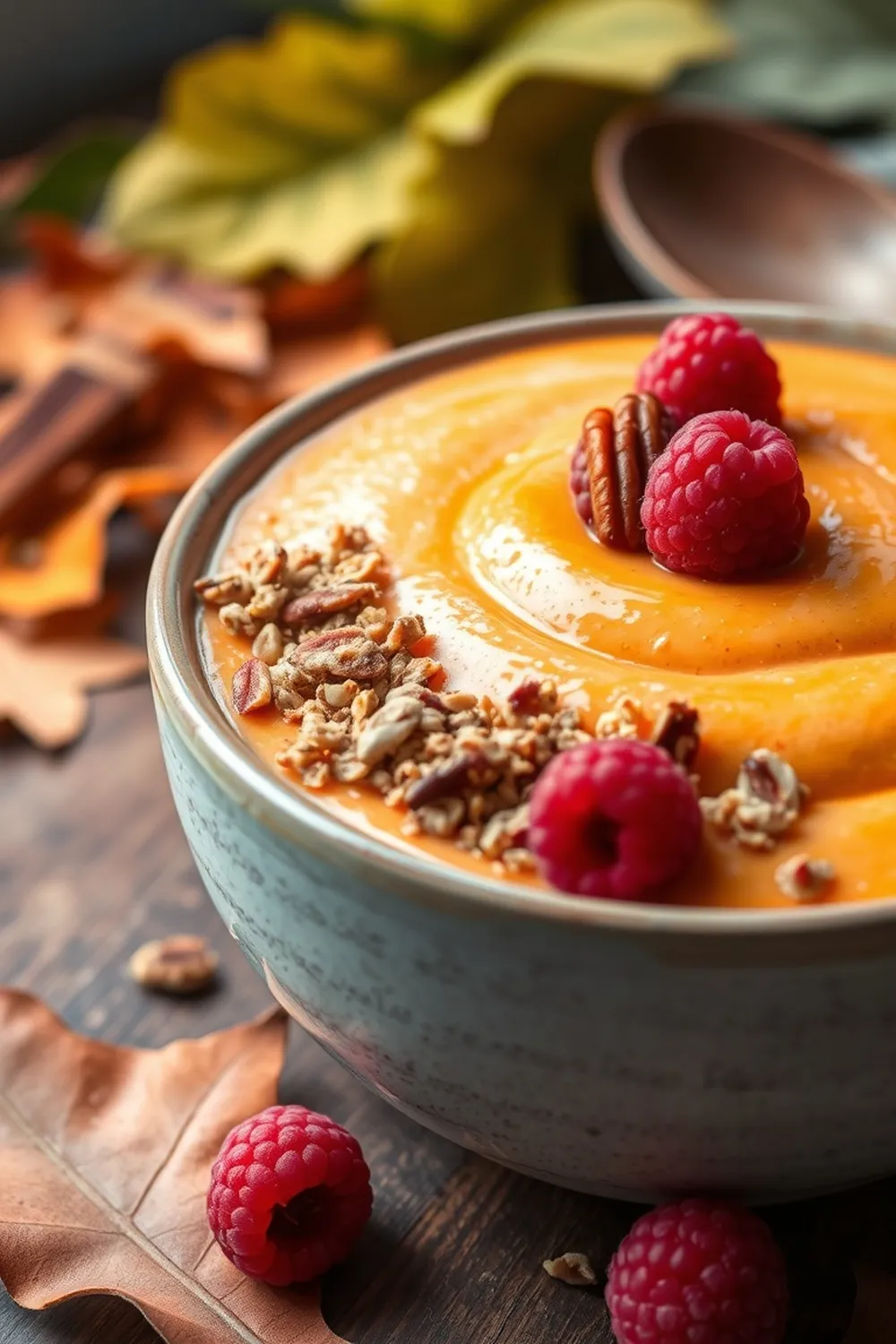- Wash poha in a strainer under running water. Drain completely and set aside.
- Heat oil in a pan. Add mustard seeds and cumin seeds. Let them crackle.
- Add chopped green chilies, curry leaves, and onions. Sauté for 2 minutes.
- Mix in salt, turmeric powder, and mashed potatoes. Stir well.
- Add drained poha and gently combine with the potato mixture.
- Sprinkle coriander leaves and lemon juice. Cook on low heat for 1 minute.
- Serve hot with sev or grated coconut.
- Calories:230 kcal25%
- Energy:962 kJ22%
- Protein:6 g28%
- Carbohydrates:65 mg40%
- Sugar:3 mg8%
- Salt:450 g25%
- Fat:12 g20%
Last Updated on 4 months by Neha Deshmukh
Poha Recipe – Authentic Indian Beaten Rice with Potato & Spices
Hey everyone! Today, I’m sharing a recipe that’s a total comfort food classic in my house – Poha! It’s a light, flavorful, and incredibly satisfying dish that’s perfect for breakfast, a quick lunch, or even a light dinner. I remember learning to make this from my aai (mom) and it instantly transported me back to cozy mornings in her kitchen. It’s surprisingly easy to make, and I promise, once you try it, you’ll be hooked!
Why You’ll Love This Recipe
This Poha recipe is more than just a quick meal; it’s a little slice of Indian home cooking. It’s wonderfully textured – soft and fluffy poha combined with the slight crunch of onions and the burst of fresh coriander. The tempering of mustard and cumin seeds creates an aroma that fills the kitchen and instantly makes your mouth water. Plus, it’s customizable! You can adjust the spice level to your liking and add your favorite toppings.
Ingredients
Here’s what you’ll need to make this delicious Poha:
- 1.5 cup poha/beaten rice
- 1 medium potato (boiled & mashed)
- 2 tablespoon oil
- 0.5 teaspoon mustard seeds
- 0.5 teaspoon cumin seeds
- 1 tablespoon green chillies (chopped)
- 7-8 curry leaves
- 1 medium onion (finely chopped)
- Salt to taste
- 0.5 teaspoon turmeric powder
- 1 tablespoon coriander leaves (chopped)
- 1 tablespoon lemon juice
Ingredient Notes
Let’s talk about the star of the show – poha! You want to use a medium-thickness poha for the best results. The thinner varieties can get too mushy, while the thicker ones might not soften properly.
There are different types of poha available, depending on where you are in India. In Maharashtra, we often use a slightly flattened poha, while in other regions, you might find rounder, puffed varieties. Both work, but adjust the soaking time accordingly.
Mustard and cumin seeds are the foundation of almost all Indian tempering (or tadka). Don’t skip them! They release incredible flavor when heated in oil. Fresh curry leaves are also key – they add a unique aroma that you just can’t replicate.
Step-By-Step Instructions
Alright, let’s get cooking!
- First, gently wash the poha in a strainer under running water. Don’t over-wash it, just a quick rinse to remove any dust. Drain it completely and set it aside. This is important – we want the poha to be moist but not soggy.
- Now, heat the oil in a pan over medium heat. Once hot, add the mustard seeds and cumin seeds. Let them crackle and splutter – that’s how you know the flavors are releasing!
- Add the chopped green chillies and curry leaves to the pan. Sauté for about 2 minutes, until the onions turn translucent and fragrant.
- Next, mix in the salt, turmeric powder, and mashed potatoes. Stir well to combine everything. The potatoes add a lovely creaminess to the poha.
- Add the drained poha to the pan and gently combine it with the potato mixture. Be careful not to break the poha while mixing.
- Sprinkle the chopped coriander leaves and lemon juice over the poha. Cook on low heat for just about a minute, allowing the flavors to meld together.
- Serve hot!
Expert Tips
- Don’t overcook the poha! It should be soft and fluffy, not mushy.
- Adjust the amount of green chillies to your spice preference.
- If you don’t have fresh lemon juice, you can use a teaspoon of lemon juice powder.
- For extra flavor, you can add a pinch of sugar to balance the acidity.
Variations
Poha is super versatile! Here are a few ways to customize it:
- Vegan Poha Adaptation: Simply skip the lemon juice or use a plant-based alternative.
- Gluten-Free Confirmation: Poha is naturally gluten-free, making it a great option for those with dietary restrictions.
- Spice Level Adjustment: For a milder flavor, reduce or omit the green chillies. For a spicier kick, add a pinch of red chilli powder.
- Festival Adaptations: During Ganesh Chaturthi, Poha is often offered as prasad (a religious offering). It’s also a popular breakfast during Makar Sankranti. My grandmother always added a special blend of spices during festivals!
Serving Suggestions
Poha is delicious on its own, but it’s even better with some toppings! Here are a few ideas:
- Sev (crispy chickpea noodles)
- Grated coconut
- Chopped peanuts
- A dollop of yogurt (for a cooling effect)
- A side of pickle
Storage Instructions
Poha is best enjoyed fresh, but you can store leftovers in an airtight container in the refrigerator for up to 2 days. Reheat gently in a pan or microwave before serving. Be aware that the texture might change slightly upon reheating.
FAQs
Let’s answer some common questions about Poha:
What is the best type of poha to use for this recipe?
Medium-thickness poha works best. It holds its shape well and absorbs the flavors beautifully.
Can I make this recipe ahead of time?
You can wash and soak the poha ahead of time, but I recommend assembling and cooking the dish just before serving for the best texture.
How do I prevent the poha from becoming mushy?
Don’t over-wash or overcook the poha. Gentle handling is key!
What can I substitute for potatoes in this recipe?
You can use boiled and mashed sweet potatoes or even peas.
Is poha a healthy breakfast option?
Absolutely! Poha is a good source of carbohydrates and iron. It’s also relatively low in fat and calories, making it a healthy and satisfying way to start your day.










